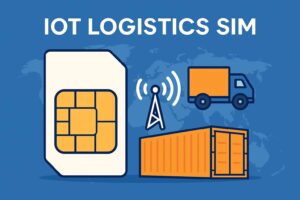The PSTN Switch-Off Explained (and Why It Matters in 2027)
BT Openreach is in the process of retiring the Public Switched Telephone Network (PSTN) — the copper-based infrastructure that’s powered traditional phone lines for decades. Originally planned for 2025, the final switch-off is now scheduled for January 2027. This is not a delay to ignore — it’s a critical opportunity to review how your business communicates.
If you’re currently using landlines, fax machines, ADSL broadband or older phone systems, they may become obsolete. Businesses that fail to act now risk disruption to calls, connectivity and key services like alarms, lift lines or card machines.
What’s Being Switched Off?
The PSTN and ISDN networks — which support most traditional business phone lines — will be completely withdrawn. Affected services include:
Traditional landline phones
ISDN2 and ISDN30 services
ADSL and FTTC broadband (if reliant on a phone line)
Some lift and alarm systems
Going forward, all voice communication must be delivered over IP networks — in short, digital and internet-based services.
Why Is PSTN Being Retired?
The PSTN network is old, expensive to maintain, and no longer fit for modern demands. As digital communications become the standard, legacy systems are holding businesses back — often without them realising it.
The move to IP-based solutions like VoIP (Voice over IP) and full fibre broadband is about delivering more reliable, scalable, and cost-efficient services.
What Does This Mean for Your Business?
If you haven’t already reviewed your telecoms setup, now is the time. While January 2027 might seem far off, Openreach is already moving exchanges into “stop sell” — meaning you can no longer order or modify PSTN-based services in many areas.
The key implications are:
Phone systems relying on copper lines will stop working
Broadband may need upgrading to full fibre or SOGEA
Your provider may phase out support before 2027
Mission-critical devices (e.g. alarms, card terminals) need compatibility checks
How to Prepare: A Practical Checklist
Here’s how to make the transition smoothly — and avoid last-minute disruption:
1. Audit Your Existing Services
Start by listing all devices and services that rely on a phone line. This might include:
Desk phones
Alarm systems
Lift emergency lines
Payment terminals
Fax or franking machines
2. Move to VoIP
VoIP systems use your internet connection to deliver voice calls. They’re more flexible, often cheaper, and come with features that traditional systems can’t match — like call forwarding, remote working support, and call analytics.
➡ Explore our Business VoIP Systems
3. Upgrade Your Broadband
To support reliable VoIP, you’ll need a stable internet connection. In most areas, ADSL and FTTC are being phased out in favour of SOGEA and FTTP (Full Fibre) broadband.
➡ See our Business Broadband options
4. Review Mobile Usage
For businesses with mobile teams or hybrid workers, business mobile plans with VoIP integration or data SIMs may offer extra flexibility during the transition.
➡ Learn about Business Mobile
5. Check Critical Systems
Speak to your alarm, lift or payment terminal providers to ensure they’re compatible with IP-based services — or arrange upgrades well ahead of the deadline.
Common Misconceptions About the Switch-Off
“We can wait until 2027”
Not quite. Many exchanges have already stopped selling PSTN services, and providers are prioritising fibre and VoIP rollouts now.
“VoIP is unreliable”
Modern VoIP is robust, secure and used by thousands of UK businesses daily. The key is using business-grade systemswith the right broadband support.
“It’ll be more expensive”
In many cases, switching to VoIP and digital services actually saves money — with lower call charges, less hardware, and simpler maintenance.
What Happens If You Do Nothing?
If your business is still using PSTN services by January 2027, they will simply stop working. Phones will go dead, broadband connections will drop, and any reliant devices may fail.
For sectors like legal services, accountancy, estate agents, and call centres, any interruption to calls or data could seriously affect client service, security, or compliance.
Conclusion: It’s Time to Plan, Not Panic
While January 2027 might feel distant, the work to withdraw PSTN is already well underway. The earlier your business acts, the easier the transition will be — without rushed decisions or avoidable disruption.
At Fidelis Plus, we support UK businesses through the entire migration process — from VoIP systems and broadband upgrades to mobile plans and IoT connectivity.






